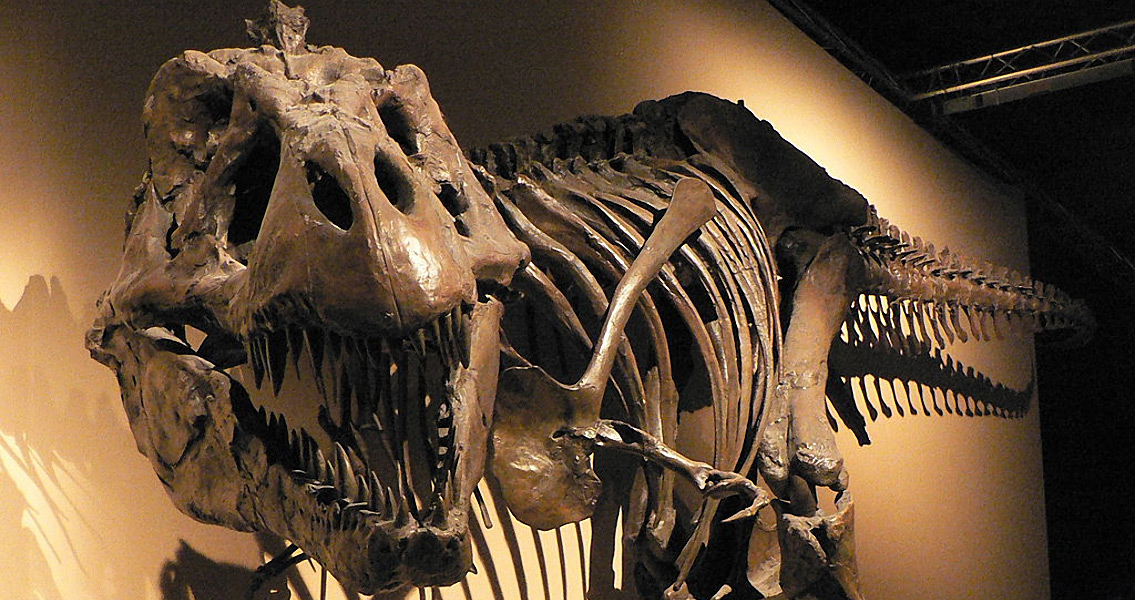<![CDATA[A Tyrannosaurus bone found in Wyoming has revealed something new about the species' dietary habits that nobody suspected: T-Rexes may very well have liked to snack on each other. The lead researcher who studied the find said in a press release that the T-Rex bone, discovered in the Lance Formation; a late Cretaceous rock formation in Wyoming which is rich in Mesozoic fossils, had very deep grooves, clearly teeth marks. The shape and depth suggested that the animal who had eaten the flesh off the bone was a large one but the feature that pointed towards another T-Rex was that the teeth of the eater had serrated edges, as evidenced by smaller grooves, parallel to the main ones. Matthew McLain explained that only theropod (bipedal dinosaurs) carnivores had serrated teeth and the only theropod dinosaurs so far discovered in the Lance Formation have been two members of the Tyrannosaurus family, which pretty much settles the matter of what gnawed at the Tyrannosaurus bone, in his view. However, since the evidence also suggests that the prey was dead at the time, the cannibalism could have been a form of scavenging, not just a kill-and-eat action. Now, based on the teeth marks, McLain will try to establish the species of the eater. For this he says he will use a method that takes as a basis for the calculations the pattern and size of the serration grooves. The method using the serration patterns has been used before on both Komodo dragon and T-Rex teeth, with success. In fact, speaking of T-Rex teeth, this Wyoming find is not the first to suggest that the most horrible dinos that roamed the earth in the Cretaceous, at least in the public mind, apparently enjoyed a snack of a fellow T-Rex. In 2010, a study of Tyrannousaurus fossils in museums in North America revealed four specimens which had bite marks on them, made by a large animal. Since the largest carnivore in the region at the time was the T-Rex, the researchers concluded that the eater must have been another T-Rex, suggesting cannibalism was a common behaviour among Tyrannosauri. Earlier this year, British researchers studied in Alberta, Canada, the remains of a Daspletosaurus, another species from the Tyrannosaurus family, which bore traces of multiple fights and cannibalism. The Daspletosaurus was smaller than the T-Rex and had apparently become a victim of a bigger genetic cousin, who also snacked on it after its death. The evidence pointing in that direction included bite marks and even one puncture wound to the back of the head, which was the result of a particularly hard bite, according to the researchers who studied the skull. The cousin in question, however, was not T-Rex because the Daspletosaurus lived 75 million years ago, the BBC writes, before that most famous of the Tyrannosaurids came onto the scene. For more information: TYRANNOSAUR CANNIBALISM: A CASE OF A TOOTH-TRACED TYRANNOSAUR BONE IN THE LANCE FORMATION OF EASTERN WYOMING Image courtesy of Wikimedia Commons user: David Monniaux]]>
T-Rex Bone Speaks of Cannibalism
